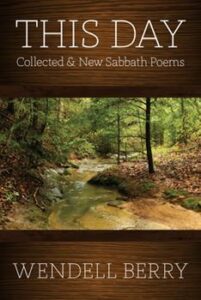 Again, Easter is upon us. And while I tend to shy away from writing about religion, I feel compelled to reflect upon the Lenten season that’s drawing to a close. The word “Lent” comes from an Old English word for “lengthening,” which, of course, refers to the increased hours of daylight in spring. In Christianity, Lent is the 40-day (not counting Sundays) season of prayer, fasting and almsgiving that precedes Easter.
Again, Easter is upon us. And while I tend to shy away from writing about religion, I feel compelled to reflect upon the Lenten season that’s drawing to a close. The word “Lent” comes from an Old English word for “lengthening,” which, of course, refers to the increased hours of daylight in spring. In Christianity, Lent is the 40-day (not counting Sundays) season of prayer, fasting and almsgiving that precedes Easter.
My first reflection is about Lenten roses. These wonderful hellebores, members of the buttercup family, are one of the easiest perennials to grow and one of the first and longest to bloom. Once established in a partial to fully shaded location, they spread year after year after year. I feared that our flash freeze the week before Christmas had hurt or perhaps killed my Lenten roses, but no. In January, I trimmed away the blackened leaves and within just a few days spotted new growth. They’ve been blooming riotously for weeks, in colors ranging from white to pale pink to dusky maroon. When there are no more daffodils with which to create a kitchen table bouquet, Lenten roses make for a delightful replacement.
Equally as simple and lovely as the flowers is a Lenten study I learned about online. It was created by the SALT project and is entitled “Wendell Berry and the Sabbath Poetry of Lent.” The study initially caught my eye because I’m a huge fan of the 88-year-old poet, novelist, essayist, farmer, pacifist and environmental activist from Kentucky. A rock star among Appalachian writers (though he would find that term laughable), Wendell Berry once wrote–in a quote that pretty much sums him up–“It matters to me that my writing is done in daytime, without electric light so that I will not have to rely on strip-mined coal.”
Materials I used for the Lenten study included a 19-page booklet printed from my computer, a Bible and a copy of Berry’s “This Day: Collected and New Sabbath Poems.” The study began on Ash Wednesday with a Scripture reading, a meditation, some suggested practices and a handful of Berry’s Sabbath poems. On it went through five Sundays until we reached Palm Sunday, the day when Jesus entered Jerusalem, “humble and riding on a donkey.” We proceeded to Maundy Thursday, Good Friday and—tomorrow!—Easter Sunday.
One reason I like this Lenten study is that it encouraged me to read more of Wendell Berry’s poetry. Out of dozens of poems contained in the collection, 34 are included in the study. None of them have titles. Instead, they’re identified by the year they were published and by a Roman numeral. While all are lovely, I’ve chosen two of my favorites, which I share here:
XIII (2008)
…But what is made
by destruction comes down at last
to a stable floor, a bed
of straw, and for those with sight
light in darkness.
III (1992)
Again we come
to the resurrection
of bloodroot from the dark,
a hand that reaches up
out of the ground
holding a lamp.
Thank you, Wendell Berry. And a blessed Easter to all.
(April 8, 2023)